Chapter 4
Observing the Violent Universe: X-rays and Gamma Rays

At the opposite end of the electromagnetic spectrum from low-energy, long radio waves are very high-energy, short X-rays followed by even shorter gamma rays, the shortest of all waves on the electromagnetic spectrum. As is the case with radio waves, X-rays and gamma rays are forms of light invisible to the eye. X-rays range in length from 1 to 100 nanometers, while gamma rays range from 0.1 to 0.001 nanometers. Wavelengths this short, some barely the diameter of individual atoms, explode across the universe with tremendous energy as a result of violent conflagrations in deep space. X-rays and gamma rays have several common characteristics besides their energy levels and lengths. An analysis of their origins reveals that they emanate from the hottest spots in the universe—regions where atoms have been raised to extremely high temperatures exceeding millions of degrees Fahrenheit. Temperatures this extreme are the result of violent collisions of atoms caused by cataclysmic explosions or heat-intense crushing gravitational fields capable of compressing stars one hundred times the size of the sun into dense spheres a few miles in diameter.
Violent cosmic infernos can only partially be detected by the visible and radio waves they emit. To investigate their nature more fully, astronomers must study the most abundant electromagnetic energy they propagate, gamma rays and X-rays. By studying the spectra of these
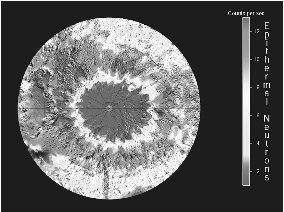
|
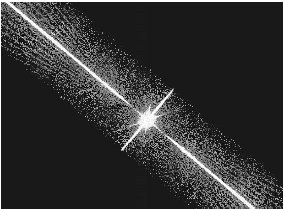
|
| At top, Gamma-ray imaging produced this view of Mars; below, the Chandra telescope captured this image of the X-ray spectrum of a black hole. |
waves, physicists can determine the composition of the objects that produced them, their age, and what part of the universe they came from. Professor Shri Kulkarni at Caltech suggests that there may be much more to be learned in the future when he says, "By relying on gamma rays or x-rays to tell us where and when an explosion is taking place, we may be exposing only the tip of the cosmic explosion iceberg." 14
Astrophysicists have located sources of extreme heat and accompanying X-ray and gamma ray emissions in an astonishing variety of places ranging from the vast spaces between galaxies to some of the universe's most bizarre phenomena such as neutron stars (highly compressed collapsed stars), supernovas (exploding stars), and black holes (a collapsed star whose gravity is so strong that not even light can escape its pull). According to astronomers Wallace and Karen Tucker in their book The Cosmic Inquirers: Modern Telescopes and their Makers ,
The discovery of multimillion-degree gas around supernovas, neutron stars, black holes, and supergiant galaxies reinforced the view that violent events and high-energy processes play a crucial and quite possibly a decisive role in the structure and evolution of our universe. 15
Although X-rays were discovered in 1895 and used by physicians to photograph bones and teeth, it was not until the late 1950s, when early satellites were catapulted into space, that astronomers began to design orbiting telescopes capable of capturing these waves and using them to provide a detailed analysis of the violent universe.
Designing Orbiting Telescopes
The most notable revolutionary characteristic of X-ray and gamma ray telescopes is the necessity of placing them in orbit high above the earth's insulating atmosphere. Even though the atmosphere consists of gases, dust, and moisture, its eighteen-mile depth is thick enough to absorb more than 99 percent of all X-rays and gamma rays. Astronomers explain that very short wavelengths passing through the atmosphere will encounter as many atoms as they would through a fifteen-foot-thick concrete wall.
One of the most formidable problems associated with satellite telescopes was providing sufficient electricity to operate a variety of motors, computers, and transmitters needed to run the instrument. Solving this problem required telescope satellites to orbit with a slight tilt toward the sun to absorb sunlight on solar panels made of thousands of thumb-sized photovoltaic cells. These cells, made of silicone, capture sunlight and then convert it to electricity used to power the telescope.
In addition to electrical needs, designers took into account temperature extremes that can daily plunge far below freezing when the satellite is shaded from the sun and then soar hundreds of degrees when it is exposed to it. Such wild fluctuations would damage fragile equipment were it not for thermostats and heating and cooling elements placed on the telescope and instruments. The thermostats measure external temperatures around the telescope and maintain internal temperatures between thirty-two and eighty-one degrees Fahrenheit.
Satellites were not the only unconventional component of very short wavelength astronomy. The physics of these short yet high-energy wavelengths meant that conventional reflecting mirrors, regardless of their composition, would not work. New unconventional light-capturing devices would be needed for both X-ray and gamma ray telescopes.
The Unconventional Design of X-ray Mirrors
X-rays do not reflect off mirrors in the same manner as visible or radio waves. Because of their high energy, X-rays that strike any surface directly will penetrate into it in much the same way that bullets striking wood embed into or penetrate its surface. Likewise, just as bullets can ricochet off a surface when they hit it at a grazing angle, so too will X-rays ricochet off mirrors if they hit at very shallow angles.
These properties forced optical engineers to construct X-ray telescopes that look more like barrels that slightly taper at one end. Typically, four mirror shells are nested inside one another almost parallel to the path of incoming X-rays so they ricochet rather than collide with mirrors. Once captured by detectors at the end of the nested mirrors, the X-ray data are then transmitted to Earth where they are analyzed and converted into mathematical values. These can then be used to produce photographs of the distant objects that produce the X-rays.
The barrel-shaped mirrors must be exceptionally smooth to ricochet exceedingly small X-rays. The surfaces of the mirrors vary by only ten-billionth of an inch so that no bumps interfere with the precise skip of the X-rays as they pass down the telescope and fall on the detectors. As a way of emphasizing the remarkable smoothness of the mirrors, astrophysicists at Caltech explain that if the earth's surface were as smooth as modern X-ray mirrors, the highest mountain on Earth (twenty-nine-thousand-foot Mt. Everest) would be less than six feet tall.
By the mid-1990s, X-ray astronomers readied the launch of their largest and most sensitive X-ray telescope, called Chandra, named in honor of Indian American Nobel laureate astrophysicist Dr. Subrahmanyan Chandrasekhar. On July 23, 1999, the National Aeronautics and Space Administration's (NASA) Chandra telescope was deployed by the space shuttle Columbia . Chandra flies two hundred times higher than most other orbiting telescope satellites, which places it in an elliptical orbit that averages about seventy-eight thousand miles from Earth, almost one-third the distance to the moon. Astronomers have used Chandra to collect X-rays in order to understand the birth and death of stars, the nature of black holes and neutron stars, and the formation and evolution of galaxies.
The Chandra Mission
The combination of Chandra's high-resolution, large collecting mirrors, and sensitivity to higher-energy X-rays is revealing secrets about extremely faint X-ray sources as they existed billions of years ago. Chandra has captured and analyzed X-rays from high-energy regions of the universe such as the remnants of exploded stars. It also has picked up a mysterious force opposing gravity that astronomers call "dark energy." Many astrophysicists believe that this oppositional energy is causing the current accelerated expansion of the universe.
Capturing X-rays from so many peculiar phenomena would be of no value to astronomers if they were unable to analyze and photograph them. Performing these two tasks occurs within the instrument. At the narrow far end of the satellite's cylinder ricocheting X-rays are captured for analysis on an imager consisting of two components: A high-resolution camera and a spectrometer that measures and analyzes energy levels. The high-resolution camera records X-ray images, giving scientists an unequaled look at violent, high-temperature events. The camera is composed of two clusters of 69 million tiny lead-oxide glass tubes. The tubes are only one-twentieth of an inch long and just one-eighth the thickness of a human hair. When an X-ray strikes a tube, it triggers an avalanche of about 30 million electrons. A grid of electrically charged wires at the end of the tube assembly detects this flood of electrons and precisely determines the position of its origin. By electronically determining the entry point of the original X-ray, the camera can produce an image of the object that produced the X-rays. As a result of this camera, Chandra has transmitted to Earth thousands of extraordinary photographs of brilliant cosmic explosions, thermal gas storms, matter being sucked
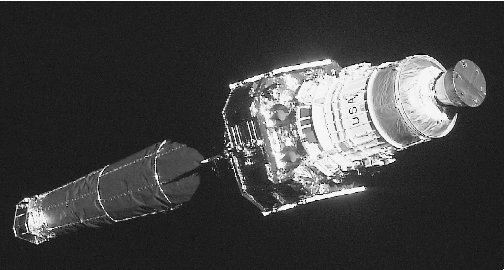
Near the camera is the spectrometer, which is capable of recording not only the position but also the color and energy of the X-rays from the observed object. These in turn are used to determine the target's distance from Earth. The spectrometer is made up of ten X-ray detectors similar to those used in home video recorders and digital cameras. The spectrometer can distinguish up to fifty different types of X-ray energies that contribute to determining the X-rays' spectrum, age, and distance to the source.
Determining the distance of stars and galaxies from Earth is crucial. This is accomplished by measuring what astrophysicists call an object's "cosmological red-shift," that is, its shift in wavelength—an actual elongation of the wavelength as it travels through space—toward the red end of the spectrum. Scientists know that the more a wavelength is redshifted, the longer and farther it has been traveling through space.
During the last two decades of the twentieth century, astrophysicists began puzzling over the origin of powerful but seemingly different explosions than those generating normal levels of X-rays. From time to time, they noted a bizarre and unexplainable flash of light ripping across the cosmos. Analysis revealed the flashes to be bursts of gamma rays. Clearly, astronomers had stumbled on something new and unusual that would require a new and unusual type of telescope to view them properly.
Gamma Ray Telescopes
Gamma ray telescopes are unlike all others—most notably because they do not utilize mirrors to capture and focus incoming gamma waves. The reason mirrors cannot be used is because gamma rays strike objects with such force—10 million times more energy than visible light and a thousand times more energy than X-rays—that even the mirrors designed to deflect X-rays fail.
Gamma ray telescopes are of two fundamental types. The first are those called spectrometers. These are telescopes capable of capturing electromagnetic radiation in simple bucket-shaped instruments known to astronomers as "light buckets." These instruments collect many wavelengths of light and filter out the gamma rays. The gamma rays then pass through electrical detectors called scintillators, which are made of several layers of silicon semiconductors, similar to those used in computers. Scintillators convert the gamma rays into low-energy visible wavelengths that can be measured, analyzed, and photographed. The instant the conversion takes place, a visible and measurable spark is emitted. This is a physical property of the conversion process known to astronomers as scintillation. That spark is then captured and analyzed to determine its energy level and age. In this type of telescope, the scintillator does not directly analyze the gamma rays; it analyzes the scintillations.
The second class of gamma ray telescope is a detector that performs the task of gamma ray photography. Detectors of this type sense gamma rays passing through a scintillator and then are able to calculate the direction of the incoming photon and create a photographic image of it. One such telescope type, called the Compton Scatter Telescope, is a two-level instrument roughly the size of a fifty-five-gallon oil drum. In the top level, each incoming gamma ray collides with an electrical component similar to a scintillator that splits the photon, causing it to scatter much like an object scatters into pieces when struck by a bullet. The scattered photon fragments then travels down into a second level of material that completely absorbs them. Phototubes recording the two levels can then determine the amount of energy captured in each layer and calculate the energy of the photon when emitted, the strength of any magnetic field, its age, and possibly the process that created it.
Tracking Down Gamma Ray Bursts
Every day, unusual but powerful explosions flash across the cosmos. Some last between a few milliseconds and a few tenths of a second; a few rare bursts may last for several seconds. These relatively rare phenomena, called gamma ray bursts (GRBs), shine hundreds of times brighter than the explosion of a typical supernova and as much as a million trillion times brighter than the sun. Such concentrations of gamma rays make GRBs the most intense energy sources in the universe. The energy release is so extreme that astrophysicists maintain that if the energy of a single millisecond burst could be harnessed and stored, the world's energy needs could be met for the next hundred billion years.
The Significance of the Redshift
Measuring the phenomenon of redshift is the only way astronomers can determine the size and age of the universe. Light traveling from far beyond the earth must cross space that astronomers know to be expanding. The expanding universe actually stretches light waves, just as if they had been drawn on the skin of an expanding balloon. As light waves travel and stretch, their colors shift toward the red end of the electromagnetic spectrum, giving them a reddish hue. If the universe were contracting, which it is not, light wavelengths would shrink toward the violet end of the spectrum, creating a "violetshift."
The redshift of astronomical objects is measured by comparing characteristic spectral lines of photons in them with spectral lines of similar photons measured in the laboratory. The principle established by the astronomer Edwin Hubble, known as Hubble's law, states that the higher the redshift, the more distant the object that emitted the light because it had traveled farther and therefore was stretched more by the expanding universe.
Just thirty years ago, when GRBs were first detected, they ranked among the greatest mysteries of the universe. Although small amounts of gamma rays had been detected coming from the sun, they did not deliver the punch of a GRB. At that time a burst was detected just once or twice a year, but today superior satellite telescopes detect roughly one per day from random directions in the sky. Based on recent studies, most GRBs appear to have originated some 10 billion years ago when the universe was very young.
One of the foremost gamma ray satellites presently orbiting the earth is the High-Energy Transient Explorer (HETE) telescope launched by NASA in 2000. Its principal mission is to detect GRBs, determine their location, and then relay that information within milliseconds of reception to other astronomers collecting visible, infrared, and radio wavelengths. These astronomers in turn, focus their various telescopes on the burst to capture, record, and photograph the many different wavelengths of electromagnetic radiation. Dr. George Ricker, principal scientist for the HETE mission, said of the telescope, "The unique power of HETE is that it not only detects a large sample of these bursts, but it also relays the accurate location of each burst in real time to ground-based optical and radio observatories." 17
GRB 030329
On Saturday, March 29, 2003, at 6:37 A . M .eastern standard time, the HETE telescope awoke startled astronomers when its computers detected the most massive GRB ever reported. According to gamma ray astronomers, the only known cataclysmic event of greater magnitude was the big bang. For more than thirty seconds, the burst outshone all other sources of gamma rays, and its afterglow, secondary radiating visible light, was still over a trillion times brighter than the sun two hours later.
Named by astrophysicists GRB 030329, within less than a split second of detection, HETE nailed down a location and immediately relayed the coordinates to hundreds of astronomers around the world, allowing them to join the observation. Dr. Ricker commented, "This was our biggest one ever, and it didn't get away. With scores of observations now completed and more

Astronomers cannot always determine what triggers a GRB, although the candidate list for such cataclysmic explosions is short. Some of the items on that list are what astronomers jokingly refer to as "weird stuff"—violent, imperfectly understood phenomena capable of generating extreme heat.
Studying Weird Phenomena
When astronomers talk about "weird" phenomena, they are generally referring to a handful of cosmic events that have roughly three common characteristics: They involve stars, they radiate massive energy and gravitational waves across space, and they are only partially understood. The three most commonly studied weird phenomena are supernovas, neutron stars, and black holes. All three, it turns out, are related.
Anatomy of Black Holes
Black holes, one of the strangest yet most intriguing astronomical phenomena, have all the characteristics of science fiction. Astronomers theorize with great certainty that black holes occur when the mass of a large star, several times the mass of the sun, runs out of fuel and collapses under its own weight until it compresses to a very small point. Under such conditions, gravity becomes so intense that not even light can escape.
A black hole does not have a surface in the same sense as the earth or sun does. A black hole does, however, have an invisible boundary called the event horizon, beyond which no telescope can see. This boundary is the point at which any matter, including light, will be sucked into the black hole, where it disappears from the sight of any outside observer. The diameter of the event horizon is very small, only about eighteen miles, compared with the diameter of the star before it collapsed, which would have been several million miles.
All matter sucked beyond the event horizon is doomed to be crushed as it descends ever deeper into the black hole's gravitational well, called the singularity. At this point, matter is compressed by the pull of gravity so intensely that all atoms are torn apart. In such an unimaginable environment, a single cubic inch of matter weighs several hundred billion tons. No visible light, X-rays, gamma rays, nor any other form of electromagnetism or particle, no matter how energetic, can escape the singularity. Black holes grow as they consume matter and their event horizons expand. A black hole in the center of a galaxy, where stars are densely packed, may attract other black holes and grow to the mass of a billion suns, at which point it becomes known as a super massive black hole.
X-ray and gamma ray astrophysicists believe that each of these phenomena represents a stage in the deaths of stars. It is at these brief moments when stars burn out after billions of years that massive transformations of matter into energy occur. These transformations generate extreme heat, much like a massive thermonuclear bomb explosion. Although photographs can be taken of these death struggles utilizing all spectra of electromagnetic energy, astronomers are able to capture more useful data from X-rays and gamma rays than from the longer wavelengths.
As a star burns up its nuclear fuel, it loses its ability to support its own weight. At a critical point, the star begins to implode and die. If the star is particularly massive (larger than the sun, for example), the collapse accelerates and triggers a huge explosion known as a supernova. The explosion creates a blast wave that ejects the star's outer layers of dense gases into space,
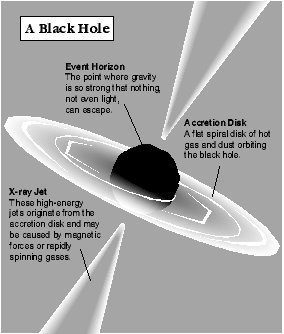
Following the supernova stage, a dying star will collapse further. If the star was approximately twice the diameter of the sun, roughly 1.7 million miles, the remaining core collapses under intense pressure until nothing remains but neutrons densely packed into a diameter between ten and twenty miles wide. At this point the star becomes a neutron star so dense that as
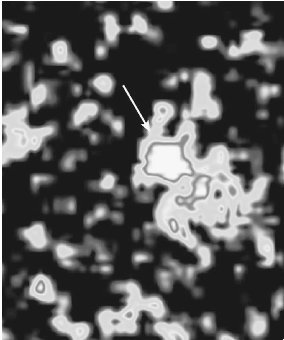
Black holes are phenomena whose cores become so dense, denser than a neutron star, that nothing, not even light, can escape their gravitational fields. For this reason, black holes cannot be seen because light that shines on them cannot bounce off. They can, however, be detected by the matter that their intense gravitational fields gobble up. As space matter swirls into a black hole, it generates intense heat that produces very short electromagnetic wavelengths. X-ray and gamma ray telescopes have detected several locations in the skies where massive dust and gas clouds have been photographed disappearing in a spiral swirl that seems to lead nowhere. According to Kelly Kizer Whitt, "The burst, named GRB 030329 resulted when a massive star ended its life and exploded, with its core collapsing inward to create a black hole." 21
While X-ray and gamma ray physicists were exploring the cosmos with orbiting telescopes and making pioneering discoveries, physicists concentrating on lower-energy wavelengths saw similar opportunities to use space telescopes to gather visible light. Not since the construction of the Mt. Palomar Observatory had new optical telescopes been designed to explore and photograph deep space.
We know that the universe is expanding, but the shorter waves undergo the same enlargement of the big ones which have less energy?
thanks